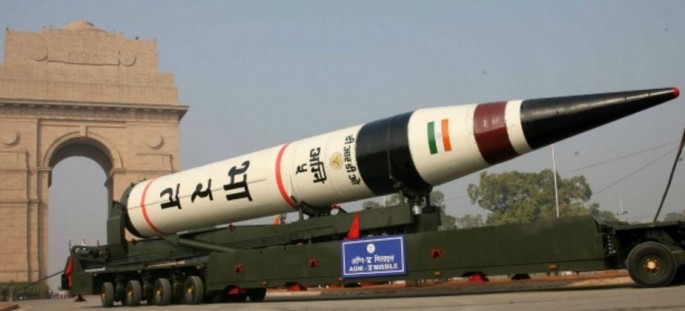India conducted a fourth successful test of its Agni-V intercontinental ballistic missile (ICBM), a road mobile, canister-launched weapon capable of delivering its payload of nuclear MIRVs (multiple independently targetable re-entry vehicles) to targets anywhere in China.
The missile also has the range to hit Moscow and any other worthwhile target in Russia. Agni-V, however, is a missile intended to destroy targets in China with nuclear warheads.
India's most powerful ICBM again took to skies on Dec. 26 from Complex 4 at Wheeler Island in the state of Odisha or Orissa. This was the second test of the canister-launched version and will now pave way for user trials of the missile by the Strategic Forces Command (SFC), which is responsible for the management and administration of India's tactical and strategic nuclear weapons stockpile.
Agni-V was first successfully tested in April 2012, also at Wheeler Island's Integrated Test Range off the northeastern coast of India.
Agni-V is a three-stage solid fueled ICBM. Its range is classified but is estimated to be anywhere from a minimum of 5,000 km to a maximum of 8,000 km. It can mount nuclear warheads with a total weight of 1,500 kg.
Indian Army sources said Agni-V might be declared operational after a fifth successful launch. The Ministry of Defense said the test showed the increasing strength of India's homemade missiles.
"Successful test firing of Agni V makes every Indian very proud. It will add tremendous strength to our strategic defense," said Prime Minister Narendra Modi in a tweet.
Agni-V should enter service in 2017, and will be "the backbone of India's China-specific nuclear deterrent."
Indian media said Indian analysts believe Agni-V might create a more stable relationship with China. But for a truly effective deterrent, these analysts believe India will have to further develop both its conventional armed forces and a second-strike capability.
No Indian ICBM had the capability to strike anywhere in China before Agni-V.



























